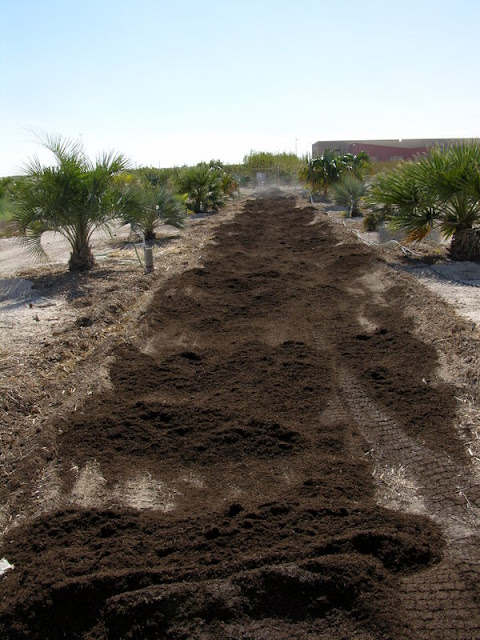Using Compost to Improve a Soil
Adding compost to a soil does two things; it changes the physical
structure of the soil and adds plant nutrients to it as well. The question
becomes, “Does your soil need it?” Sometimes it does, sometimes it doesn’t.
Learn to know if your soil needs compost or not before buying it.
Improving Soil Structure
Compost changes the physical structure of the soil. This can be a good thing when its needed or it can be unnecessary if its not. By adding compost to a soil it improves water drainage in soils that don’t drain water easily. |
| Soil drainage and aeration is improved because of the improved soil structure created by compost. |
But, like a sponge it also holds water in a soil before it drains making it available for the plant to use. Mixing the right amount of compost into a soil can be tricky. You want the soil to drain water, but you also want it to hold water for plant roots.
At some point, when you find that balance between draining water and holding water, adding more compost to it is throwing your money down the drain…literally! Find the amount of compost to add and then stop! Add enough compost every year to maintain the ideal balance for the plants you are growing.
Plant Roots Must Breathe
Plant roots must “breathe” or they will suffocate and die.
Adding more compost to a soil increases its “aeration” or the admission of “good”
air full of oxygen into the soil and the releases of “bad” air from the soil. Some
plants need more compost, or aeration, in the soil surrounding their roots than
others. For instance, lawns and palms tolerate lower amounts of aeration
in the soil while roses, flowering bedding plants, most vegetables and many ornamental
trees and shrubs need more aeration.
The amount of compost to add depends on which plants you are growing. But ALL plants tolerate aerated soils. Know the plants you are growing and add compost to soils when its needed.
 |
| Plugs or cores taken from a lawn improve drainage and root aeration which causes roots to grow deeper. This is mechanically doing what compost does naturally! |
The amount of compost to add depends on which plants you are growing. But ALL plants tolerate aerated soils. Know the plants you are growing and add compost to soils when its needed.
Using Compost as a Fertilizer
Compost improves a soils structure for better drainage and it can add nutrients as well. The question becomes, “How much to add?’ The answer may surprise you. It depends. |
| A circle of rich compost such as Viragrow's can feed plants by releasing its plant nutrients. The compost remains in place to slowly improve the soil surface where feeder plant roots like to grow. |


No comments:
Post a Comment